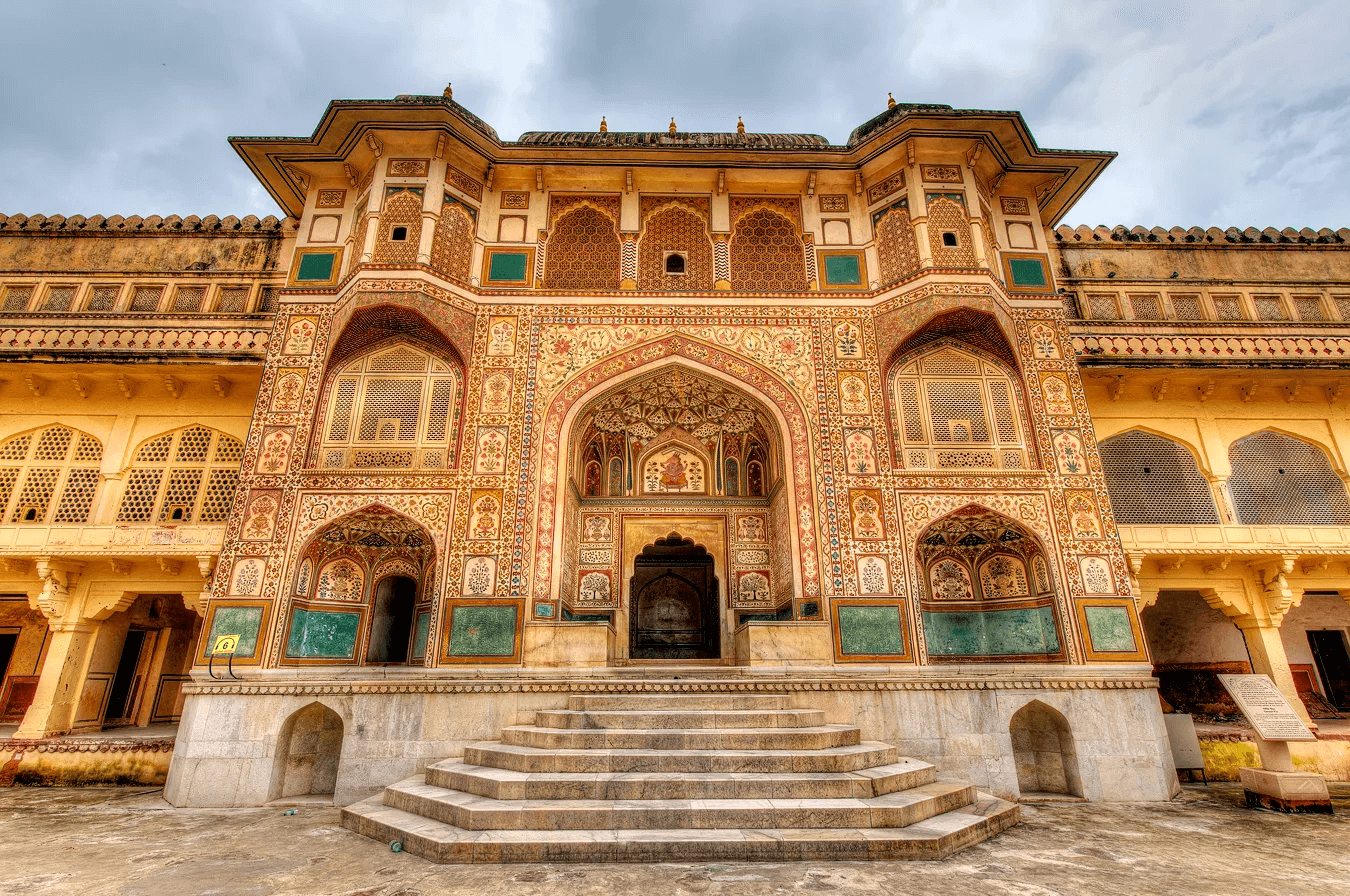One of the centres of attraction in the Golden Triangle India tour is The City Palace. Located in Jaipur, Rajasthan, India, the City Palace is a historical royal residence and former administrative centre of the Jaipur district. Built during the reign of Maharaja Sawai Jai Singh II, he played a key role in the founding of the city in 1727 when he shifted the capital from Amber to Jaipur. Until 1949, when Jaipur became the capital of the newly created Indian state of Rajasthan, the palace served as the residence of the Maharaja of Jaipur and held both ceremonial and administrative functions.
Built in 1732, The City Palace reflects a blend of Mughal and Rajput architectural styles based on architectural principles. Today it houses the Maharaja Sawai Man Singh II Museum and is the residence of the royal family of Jaipur, which has about 500 personal servants.
The palace complex consists of various rooms, courtyards, galleries, restaurants, and museum trust offices. The trust is headed by Rajmata Padmani Devi of Jaipur and administered by Princess Dia Kumari, who runs The Palace School and Maharaja Sawai Bhawani Singh School, and the Princess Dia Kumari Foundation, which empowers underprivileged women in Rajasthan.
The City Palace’s history is intertwined with that of Jaipur, which was meticulously planned by Maharaja Sawai Jai Singh II as part of the Golden Triangle India. He shifted the capital to Jaipur due to population growth and water scarcity in Amber. Under his architectural guidance, the city was designed in six blocks separated by wide avenues, following Vastushastra principles, making it a significant stop on the Golden Triangle India tour.
Following Jai Singh’s rule, Maharaja Ram Singh painted the city “Pink” to honour a visit by the Prince of Wales (later King Edward VII), giving Jaipur the moniker “Pink City.” Man Singh II was the last Maharaja to rule from the Chandra Mahal within the palace. Even after Jaipur merged into the Indian Union in 1949, the royal family continued to reside there.
The City Palace is a complex of courtyards, pavilions, gardens, temples, and important buildings, including the Chandra Mahal, Mubarak Mahal, Shri Govind Dev Temple, and City Palace Museum. The Govind Devji Temple dedicated to Shri Krishna is an essential place in the Golden Triangle India tour.
The entrance to the palace complex passes through three gates: Udaypole, Virendrapole, and Tripolia, all of which are integral to the Golden Triangle India tour experience. The Sabha Niwas or Diwan-e-Aam is a public audience hall with ornate arches, marble pillars, and painted plaster. The surrounding Bhadra was known as the Diwan-e-Khas, a very secret court for the ruler.
An inner courtyard called Pritam Niwas Chowk provides access to the Moon Palace. The courtyard has gates symbolizing the four seasons and Hindu deities, enhancing the experience of visitors on the Golden Triangle India tour. The Chandra Mahal, a seven-storey structure, is one of the oldest buildings in the complex and holds the royal standards of Jaipur.
Built in 1900, the Mubarak Palace, characterized by stunning white and beige stone, houses museum offices and textile mills, offering a unique perspective on the Golden Triangle India tour. The clock tower on the south side of the convention centre reflects European influences, as it was built there in 1873 to enforce punctuality in court proceedings.
The City Palace stands as a symbol of Jaipur’s rich history, blending architectural grandeur, art, culture, and royal heritage, making it a must-visit destination on the Golden Triangle India tour. It is a testament to the past of the Maharajas and their legacy in the Pink City.


0 Comment